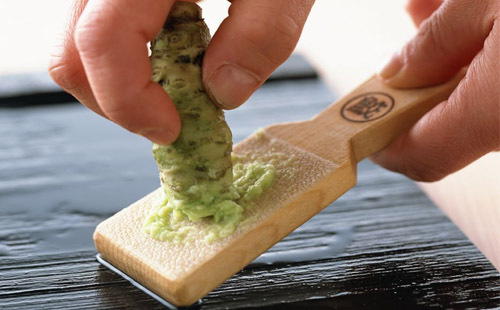What is the difference between horseradish and mustard?
Release time:
2019-08-14
Author:
Source:
Number of views:
951

Mustard is the seed of mustard greens, and horseradish is the root of wasabi.
When it comes to mustard, it always gives people a tear-inducing feeling, but this tear-inducing substance deeply attracts countless diners who love its pungent flavor.,They love the unique taste it brings to ingredients.
When dining at a Japanese restaurant like Xian Kuai Lv, many people enjoy pairing sashimi, sushi, and soba noodles with mustard. The melt-in-your-mouth texture and the fresh spiciness that goes straight to the nose make it irresistible. Besides being a condiment for sashimi, mustard is often used as a seasoning for pickles, salads, and meats. The French like to pair their steaks with strong-flavored French mustard. Additionally, mustard sauce can also be used as an ingredient for making mayonnaise, vinegar, marinade, or barbecue sauce.
There are different types of mustard, such as yellow mustard originating from China, and American mustard made from mustard seeds, garlic powder, Hungarian paprika, turmeric powder, mixed with water, salt, vinegar, and other seasonings.,There are also French mustard, honey mustard, and so on.
Some may ask, doesn't mustard also include the Japanese "wasabi"? "Wasabi" is actually a paste made from the root of wasabi, not mustard. Wasabi paste and horseradish paste, which is ground from horseradish, are referred to as "green mustard" (or "Japanese mustard"). However, in reality, wasabi paste and horseradish paste are only similar to mustard in taste and texture, and are unrelated to mustard. Because wasabi root is expensive and wasabi paste is difficult to preserve, most Japanese restaurants use yellow mustard or dyed horseradish paste as a substitute.
Because of this, the mustard we usually eat is mainly yellow mustard.,Yellow mustard is not as spicy as "green mustard" and has a milder taste, making it versatile: it can be used as an ingredient for boiled or stewed dishes, and can also be paired with pasta and buns.
Compared to Japanese wasabi, the mustard consumed in European countries is made from mustard powder and is mostly yellow and creamy. It does not have the pungent smell of wasabi, and although it is slightly saltier, it is more acceptable to everyone. It is a common condiment in European countries, and in some fast-food restaurants in Europe, mustard sauce is a versatile dressing that can be used as a dip for steak or even French salted fish.
Excessive mustard can harm the stomach, so it should be added in moderation during cooking. Pregnant women, patients with gastritis, digestive ulcers, and those with eye inflammation should avoid mustard. It is important to note that mustard should not be stored for long periods and should be kept sealed at room temperature, away from light and moisture. When mustard starts to ooze oil or tastes bitter, it should not be consumed.
Which is better, mustard or horseradish?
This depends on personal preference; some people prefer the stronger flavor of mustard.
Wasabi, like horseradish, has a flavor that is used in Japanese cuisine, providing a unique sensation and taste.
Previous article
Related News




